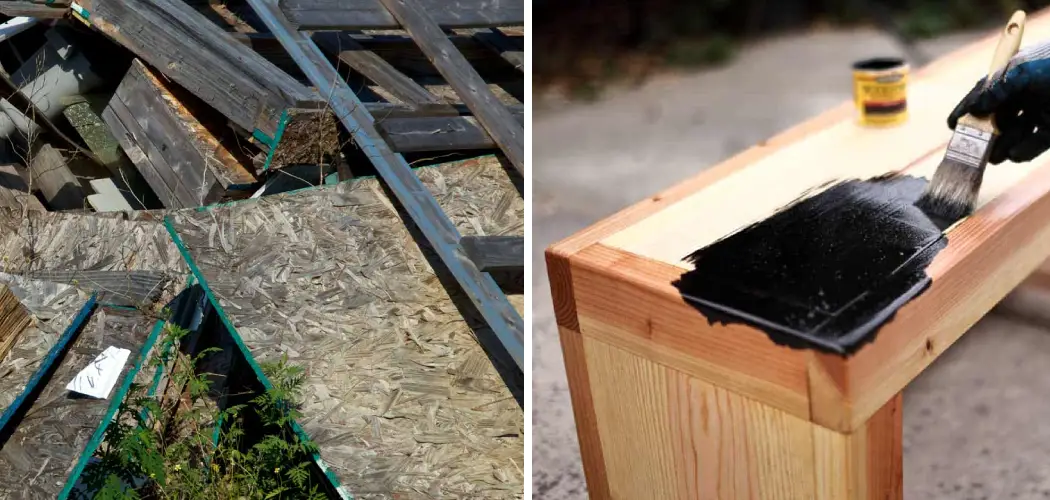If you’ve experienced wood warping in your outdoor projects, then you know how frustrating it can be. Warping is a common problem for builders who are trying to keep their wooden structures standing strong through changing weather conditions and varying temperatures.
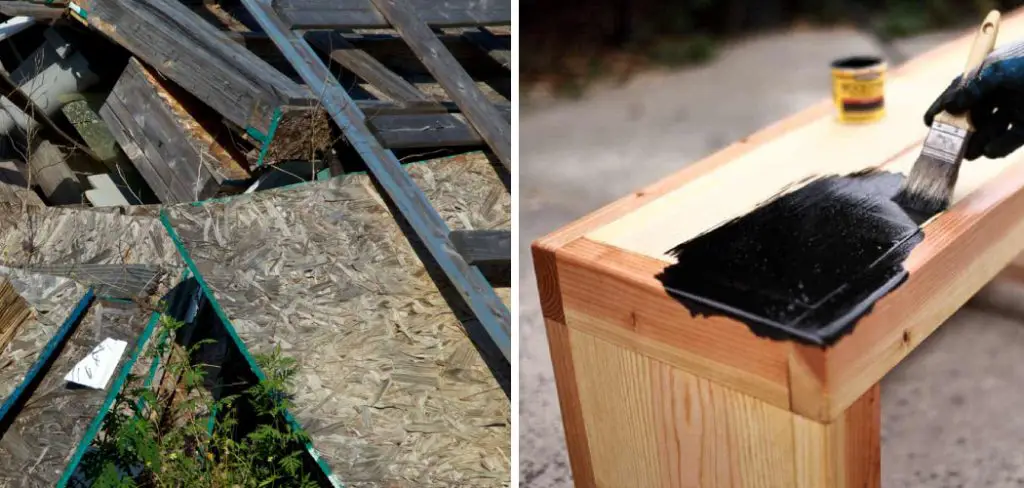
If you’re looking for an effective way to keep your wooden furniture, shutters, decks, or other outdoor surfaces from warping due to temperature swings and humidity shifts, then you’ve come to the right place. Warped wood can be costly to replace and not just a little annoying.
In this blog post, I’ll outline several simple steps on how to stop wood from warping outside that you can take in order to ensure that your wood remains flat and sturdy outside. After all–you don’t want your hard work going down the drain (literally paying someone else money) because of something small like warped wood! So let’s get into it. Keep reading if you’re ready to learn more about how best to stop wood from warping outside!
What is Warping?
Warping is a type of distortion that affects wood when it’s exposed to extreme changes in temperature, moisture levels, or humidity. It can cause the wood to bend and twist as the board absorbs water and expands with increasing temperatures. As you might imagine, this can cause some major issues if your outdoor projects are made of warped wood.
Fortunately, there are several steps that you can take to help prevent your wood from warping due to shifts in temperature and humidity. Keep reading to learn more!
What Causes Warping?
1. Moisture
The most common cause of warping is wood that has not been properly dried. If the wood is still retaining moisture when it’s used for a project, then it can react to changes in temperature and humidity by expanding and contracting–causing warping in the process.
2. Improperly-Sized Boards
Another cause of warping is using boards that are too thin or wide for the project. If a board is too thin, then it won’t be able to support itself in the presence of changes in temperature and humidity, leading to warping. On the other hand, if a board is too wide, then it will absorb more moisture than it should which can cause warping as well.
3. Improperly-Sealed Surfaces
Finally, if the surface of a wood project isn’t sealed properly with a water-resistant sealant or paint, then it may not be able to protect itself from moisture. This can lead to warping as the wood absorbs water and expands.
10 Tips on How to Stop Wood From Warping Outside
1. Dry Your Wood Properly
The first step in preventing outdoor projects from warping is making sure that your wood is properly dried before use. If you’re working with freshly-cut lumber, then you should let it sit for a few weeks so that the moisture levels can even out before you begin working with it.
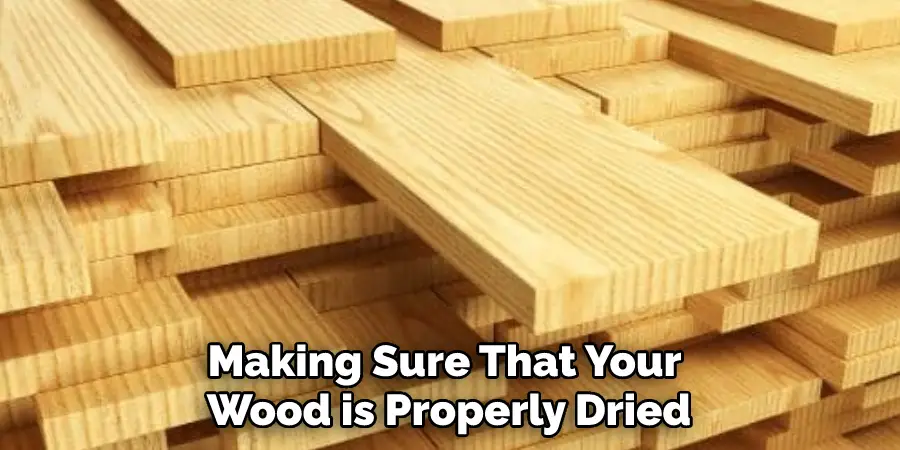
2. Choose The Right Board Size
When selecting boards for your project, make sure to choose ones that are the correct size for the job. If possible, go with thicker boards since they tend to be more stable in the presence of temperature and humidity shifts.
3. Seal All Exterior Surfaces
To make sure that your wood is protected from moisture, it’s important to apply a water-resistant sealant or paint to all exterior surfaces. This will help keep moisture out and prevent warping in the process.
4. Store Wood Indoors
If possible, it’s best to store the wood for your outdoor projects indoors. This will help prevent warping caused by moisture buildup and changes in temperature.
5. Choose The Right Glue
When working with wood outdoors, make sure to use water-resistant glue that won’t be affected by humidity or temperature swings. This will help keep your projects from coming apart due to warping.
6. Avoid Rapid Temperature Changes
When storing wood outdoors, try to avoid leaving it in places where it’s exposed to rapid temperature changes. This can cause the wood to expand and contract quickly, leading to warping over time.
7. Use Support Pieces
If you’re working on an outdoor project that involves large pieces of wood, consider adding support pieces to help keep them stable in the presence of temperature and humidity changes.
8. Ventilate Your Projects
When constructing outdoor projects, make sure that you provide adequate ventilation for the wood. This will allow moisture to escape, helping to prevent warping in the process.
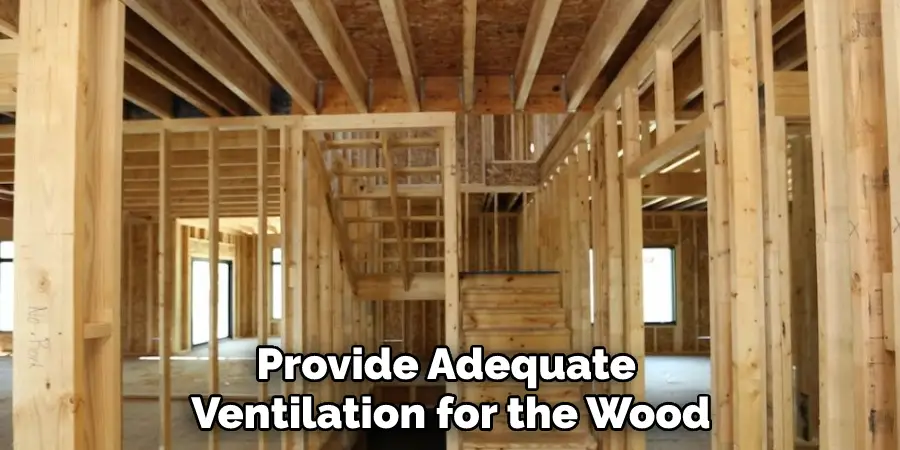
9. Avoid Exposing The Wood To Water
Finally, try to keep your wood projects away from sources of standing water. This includes rain, snow, and even sprinklers and pools. Any moisture that gets on the wood can cause warping over time.
10. Check for Warps Regularly
Once your project is complete, make sure to inspect it periodically for signs of warping. If you spot any warps, then take the necessary steps to correct them as soon as possible.
Following these tips will help ensure that your outdoor projects remain sturdy and stable in all kinds of weather. With the right preparation and materials, you can protect your wood from warping and keep it looking great for years to come.
8 Common Mistakes to Avoid
1. Not Staining or sealing the wood. When exposed to extreme temperatures and humidity, wood can warp if it is not sealed with a stain or sealant. A water-resistant sealer helps protect the surface from moisture that can cause warping, cracking, and splitting.
2. Not allowing airflow. Wood needs air to breathe and will warp if it is deprived of air circulation. Be sure to provide adequate space in between the boards for airflow, and make sure that you do not stack them on top of each other too tightly.
3. Not using screws or nails properly. To avoid warping, use screws and nails that are the right size for your wood planks. Make sure to choose screws or nails with enough length to penetrate the entire thickness of the board.
4. Not using a level surface. Warping can occur when you place wood planks on an uneven surface, such as dirt or gravel. It is important to ensure that the surface is level and stable before installing your wood.
5. Not using enough fasteners. Fasteners provide extra support to help keep the boards in place, so be sure to use enough of them for larger planks or for heavier loads on the material.
6. Not applying a finish coat. If you are leaving your wood exposed to the elements, be sure to coat it with a finish that is designed for outdoor use. This will help protect it from UV rays and other weather conditions.
7. Not checking for moisture content. Before you install your wood outside, be sure to check the moisture content of the wood, which should never exceed 19%. Higher levels of moisture can cause warping and other damage.
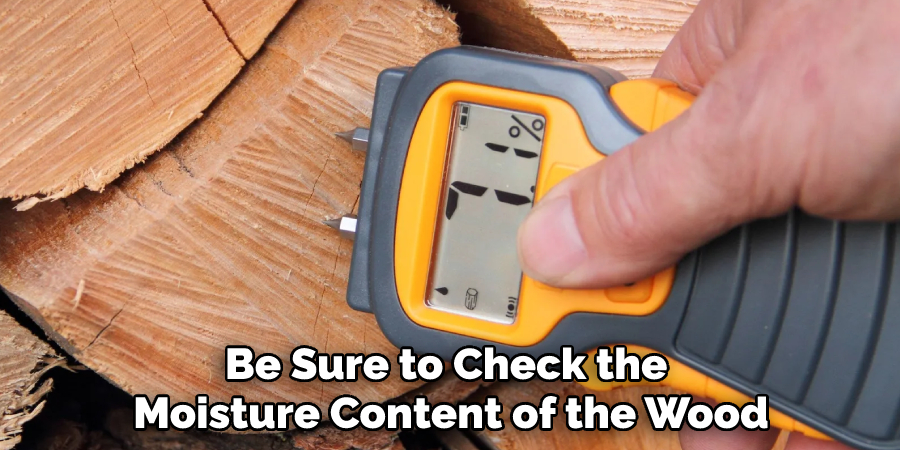
8. Not using pressure-treated lumber. Pressure-treated wood is specially treated to resist moisture, decay, and other weather conditions that can cause warping. Make sure to use it when you are building outdoor projects.
With these tips in mind, you can be confident that your outdoor wood will stay strong and straight for years to come. Be sure to do your research, invest in quality materials, and take the time to install it properly. Doing so will help ensure that your outdoor wood projects remain beautiful and durable.
Frequently Asked Questions
Does Oiling Wood Prevent Warping?
Using oil on wood can prevent warping in some cases, however, it is not a guaranteed prevention method. Oiling wood can help to seal the surface and protect it from moisture and other environmental factors that may lead to warping. However, if the wood has already begun to warp due to changing weather conditions or being exposed to too much water, oiling will not reverse any warping that has already occurred.
Is Warping Reversible?
In some cases, yes, it is possible to reverse the warping that has already occurred. However, depending on the severity and extent of the warp, it may not always be feasible or possible.
If the warp is minimal and if the wood has not been exposed to too much moisture, there are some methods you can try in order to reverse any warping that has occurred. Applying heat and steam to the warped area is one method that may help. Additionally, clamping two pieces of wood together and fastening them so that they are flat can also help in reversing warping.
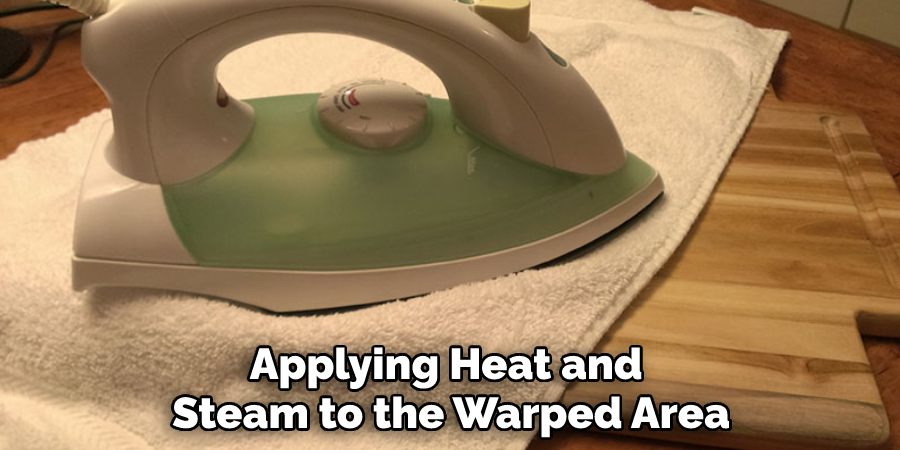
Conclusion
Warping of wood, while always a possibility, can be mitigated by taking preventive, protective actions. Sealants and repellents not only provide protection against weathering elements, they also help maintain the aesthetic and structural integrity of the wood in outdoor settings.
Additionally, proper placement of wood assists with warping prevention due to minimized exposure to excessive moisture or direct sunlight. Taking the same precautions for other materials, such as metal, will also help eliminate potential warping issues.
Ultimately, taking small measures might make a huge difference in keeping your outdoor woods from warping and will save you time, money, and frustration in the long run.
By following these steps on how to stop wood from warping outside regularly and making use of appropriate treatments for wooden products used outdoors, you can avoid warped boards caused by inclement weather conditions. Furthermore, regular maintenance of these materials is key to preserving the beauty and performance of your outdoor elements for years to come.

